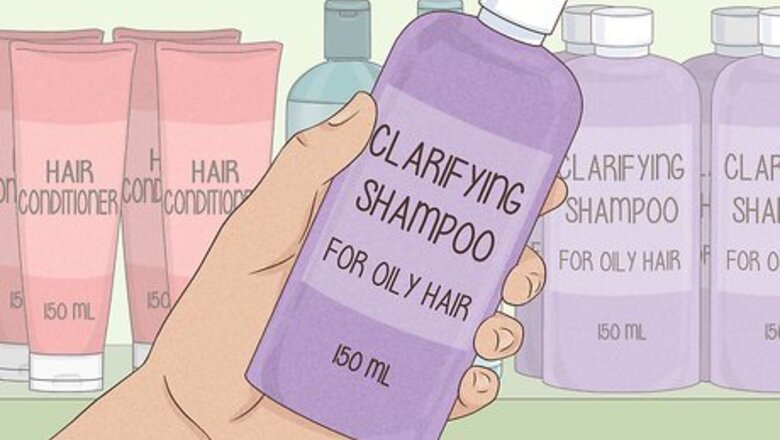
views
Here are 11 effective ways to get rid of excess grease and keep your hair looking clean.
Use shampoo that’s formulated for oily hair.

There are tons of products out there that can make your life easier. Browse a supermarket or drugstore near you to find a clarifying shampoo to help you fight hair grease. Most of these products are pretty similar, so the brand doesn’t really matter! Avoid products that advertise "added shine," which usually means they contain oily ingredients. When you use your shampoo, don’t scrub it into your hair too hard. Just rub it enough to get a good lather going. Scrubbing too hard can irritate your scalp or damage your hair!
Shampoo your hair more often.
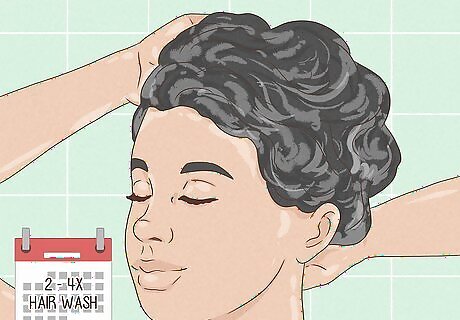
If your hair is always greasy, it may be a sign that you're not washing it enough. You may have heard that washing your hair less often can retrain your scalp to produce less oil, but that's actually a myth. Some of us just naturally have greasier hair than others, which means we need to shampoo more often than people with dryer hair. If your hair is regularly greasy, try shampooing more often and see if that helps. Experiment and find a washing schedule that leaves your hair feeling healthy and soft to address the greasiness without damaging your hair.
Apply conditioner only after you shampoo.
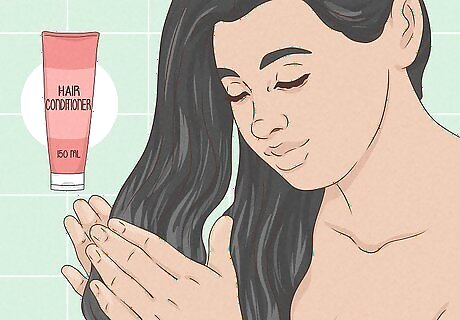
Conditioner is designed to make hair soft and silky, which isn’t far from greasy. Only use it immediately after shampooing, when your hair is at its driest, and stick to a dollop about the size of a small coin. Rub the conditioner into the ends of your hair only. Your roots are slick enough on their own! To cut down on the amount of conditioner you’re using even more, try lightly applying a spray-on, leave-in conditioner instead.
Try using dry shampoo in between washes.
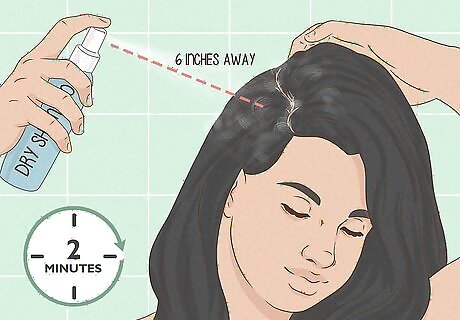
Dry shampoo is a scented powder that sits in your hair and absorbs grease. It even does so without rinsing away all of your hair’s protective oils! To apply dry shampoo, hold a spray can of dry shampoo about 6 in (15 cm) away from your hair and spray it lightly onto your hair near the roots in oily areas. Let it sit for 2 minutes, then massage it into your hair with clean hands. Apply dry shampoo whenever your hair feels greasy, or about 1 to 3 times between shampoo washes. Too much dry shampoo can cause white buildup. To avoid this, always spray it lightly onto oily areas only, which are typically the layers of hair nearest to your scalp. Dry shampoo is available in powder form as well as sprays. Choose this variety if you are sensitive to fragrance or aerosols. If you don’t have any dry shampoo, use baby powder as an alternative. Sprinkle a little near your roots and rub it in to absorb grease. Avoid spraying the ends of your hair with dry shampoo because it can make them dry and frizzy.
Absorb grease with blotting paper.
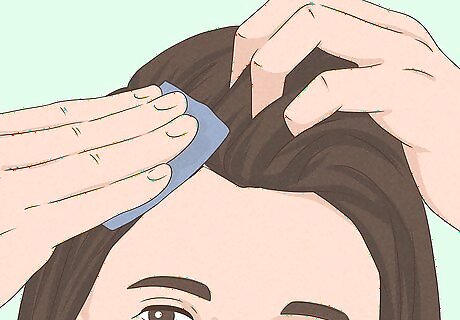
This is a good trick to get rid of hair oils in a pinch. Part your hair in a few different places, then rub a sheet of blotting paper along your roots and scalp to absorb excess oil. Use a new sheet when the paper gets filled with grease. You can get blotting paper from cosmetics shops or online. Carry a pack with you wherever you go for tackling grease emergencies!
Treat your hair with apple cider vinegar.
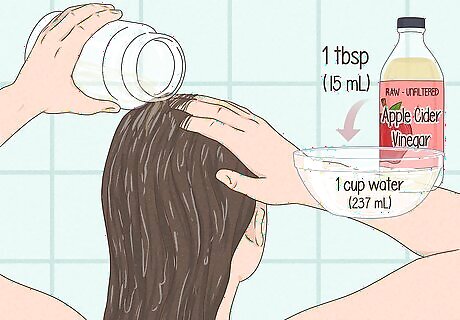
Diluted apple cider vinegar can strip away oil build-up. Put 1 US tbsp (15 mL) of apple cider vinegar in 1 cup (237 mL) of water. Pour the mixture through your hair and leave it for a few minutes, then rinse it out. Keep in mind that this works very well for some people, and not at all for others.
Take care of dandruff.
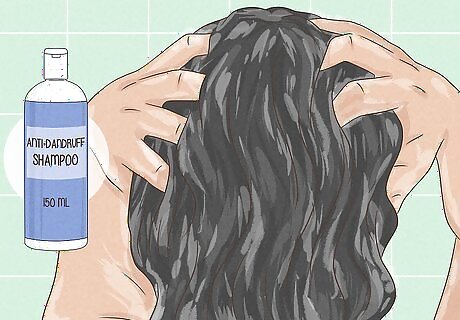
Many people with dandruff often think the problem is dry skin. Actually, dandruff can be triggered by an overproduction of sebum, or scalp oil! If you have dandruff, treat it with dandruff shampoo according to the label’s instructions. There are several types of dandruff shampoo. If your dandruff doesn't decrease after a few uses, switch to one with a different active ingredient, or visit your doctor for a prescription-strength treatment. Taking vitamin B or zinc supplements can also help treat dandruff.
Use hair products sparingly.
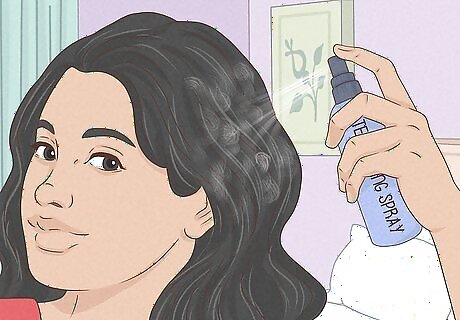
Styling products like mousse and gel make your hair oily more quickly. Avoid using these things as much as possible. When you do use them, stick to light products only, such as texturizing sprays or pomades and styling creams with matte finishes. If you bust out the mousse for a special occasion, be sure to wash it out at the end of the day! You never want to use products with glossy finishes if you already have oily hair, unless you want to dress up as a greaser for Halloween!
Brush your hair twice a day.
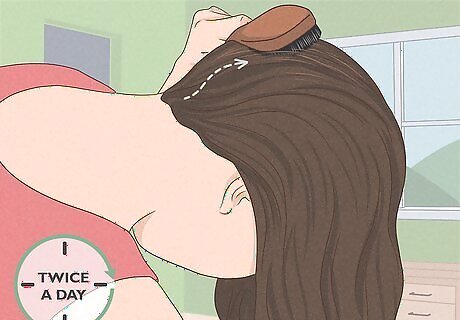
This reduces oil build up near your roots. Use a natural-bristle brush and brush your hair once in the morning and once at night before you go to bed. This distributes the natural, healthy oils throughout your hair so they don’t sit in clumps near your scalp. A boar-bristle hair brush is one example of a type of natural-bristle brush that’s great for greasy hair. Backcombing is the best technique for brushing your hair’s natural oils through your hair.
Keep your hands out of your hair.
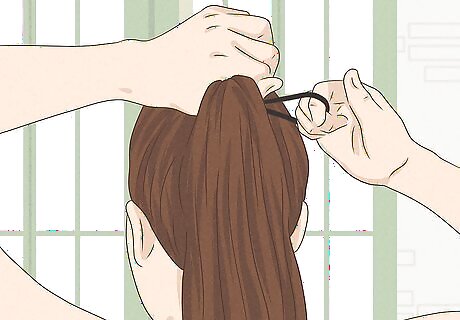
Oils and dirt from your fingers easily transfer to your hair. Avoid the urge to twirl your hair or brush a lock back with your fingers. If your hair is long, clip or tie your hair back so it doesn't fall in your eyes and you don’t have to mess with it to keep it under control. For long hair, you can also try hairstyles like buns and ponytails to keep it neat and tidy and avoid touching it throughout the day. If you absolutely have to touch your hair, wash your hands thoroughly with soap and water first.
Avoid eating oily foods.
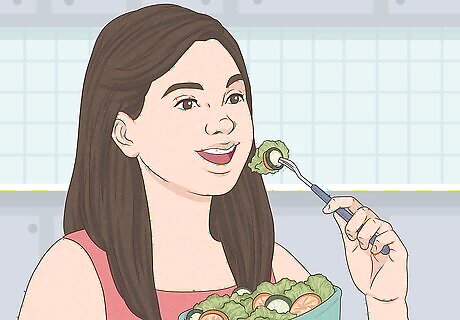
Your diet can play a role in your hair’s oil production. Stay away from greasy, fried foods to help fight hair grease. Increase your intake of fruits and vegetables to keep your hair healthy and less oily. For example, things like French fries, onion rings, and other fast foods can contribute to excess oil in your hair. Lorraine Massey Lorraine Massey, Hair Stylist Greasy roots and limp strands often plague curly hair. Clarify buildup with a sulfate shampoo weekly, focusing just on the scalp. Rinse thoroughly and follow with a gentle conditioner avoiding roots. Absorb excess moisture with a microfiber towel or t-shirt.




















Comments
0 comment